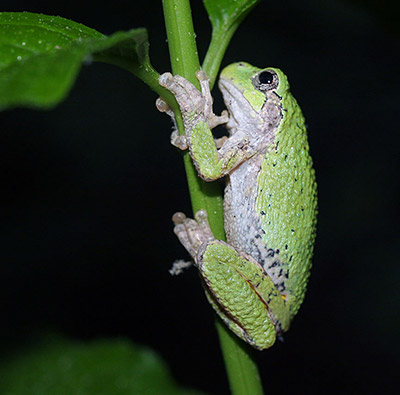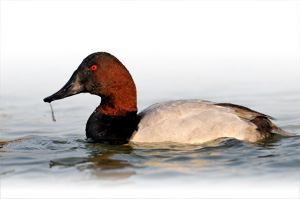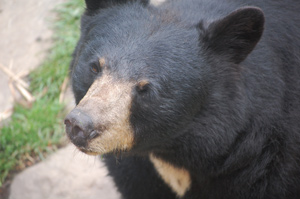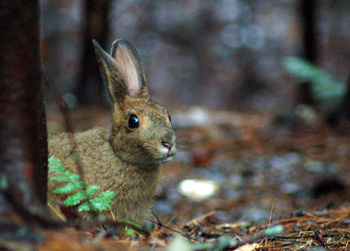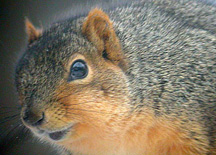Posts Tagged ‘Wildlife’
Brook Trout Brought Home
By Barbara Musumarra Little Stoney Creek in the Cherokee National Forest is once again teeming with Southern Appalachian brook trout. This fall, the Tennessee Aquarium Conservation Institute released 1,100 of the fish into their native waters. Researchers will track the trout’s growth and survival rate through data collected by a coded wire tag that was…
Read MoreAcrobats of the Forest: The Eastern Gray Treefrog
By Meredith Warfield It’s mating season in Appalachia, and the region’s deciduous forests are humming with life. Birdsongs may be heard by day, but by night the Eastern gray treefrogs have hopped out of the branches and flocked to nearby ponds, where they can be heard singing their melodic love songs in hopes of attracting…
Read MoreOtterly Amazing: Resilient Mammals Stage an Impressive Comeback in Appalachia
By Chelsey Fisher With short legs, a slender body, webbed toes and a generally friendly personality, American river otters are one of the most charismatic creatures in the country. These four-foot-long mammals once flourished in the eastern part of the United States, including Appalachia. But as America rose in population, so did the amount of…
Read MoreNative Bivalves “Musseling” Their Way Back into Appalachian Streams
By Matt Grimley Waterways are sometimes disturbed by humans, and mussels are often the first to feel the pain. Thankfully, conservationists are working to repair native Appalachian populations of the bivalve. In West Virginia, the state Division of Natural Resources is using fish to restore pollution-damaged populations of pink heelsplitter mussels, and they’ve found an…
Read MoreSafe Passage
By Matt Grimley Every fall and spring, an ongoing restlessness called zugenruhe begins to make some birds’ wings twitch at night. They will gorge on seeds and insects, fattening their bodies by as much as 10 percent per day. Solitary birds will even flock together for better predator avoidance, food finding and orientation for the…
Read MoreTraditional Trout Hang on to Native Waters
By Molly Moore Although they only occupy about 25 percent of their historic range, southern brook trout are doing alright, says Jim Habera, a cold water fisheries biologist for the Tennessee Wildlife Resources Agency. He has worked on every brook trout stream in the eastern part of the state, and the remaining population has stayed…
Read MoreThe Ebb and Flow of Appalachia’s Game Species
By Davis Wax From the mythic, raccoon-crowned Daniel Boone to the adventurous, tradition-minded hunter of today, hunting in Appalachia makes up a long and colored tale. Its most intriguing characters may be the game species themselves, each accentuating a pastime and way of life which is slowly becoming history. A Game Icon of Southern Appalachia…
Read MoreThe Heated Issue of Prescribed Burns
By Molly Moore Steep rock cliffs, a raging river, weathered heath balds and several types of forest make the Linville Gorge Wilderness Area in Western North Carolina a popular recreation destination. A few rare species native to the gorge are at the center of a controversial U.S. Forest Service proposal to conduct controlled burns, in…
Read MoreThe Custodian’s Conundrum
By Molly Moore A swarthy tree trunk stands in a small clearing, a gap in the forest canopy created by its once-thick crown of leaves. Shrubs and saplings clamor for sunlight around the tree’s base, and carpenter ants colonize the wood’s damp interior, pushing it closer to decay. Sensing this activity, a pileated woodpecker, with…
Read MoreFox Squirrels Making a Comeback in N.C.
If you’ve ever seen what you thought was a gray squirrel on steroids, what you actually saw was most likely a fox squirrel. This bushy-tailed, colossal squirrel is common throughout most of Appalachia, but was not seen in the North Carolina mountains in several decades — until relatively recently.
Read More
